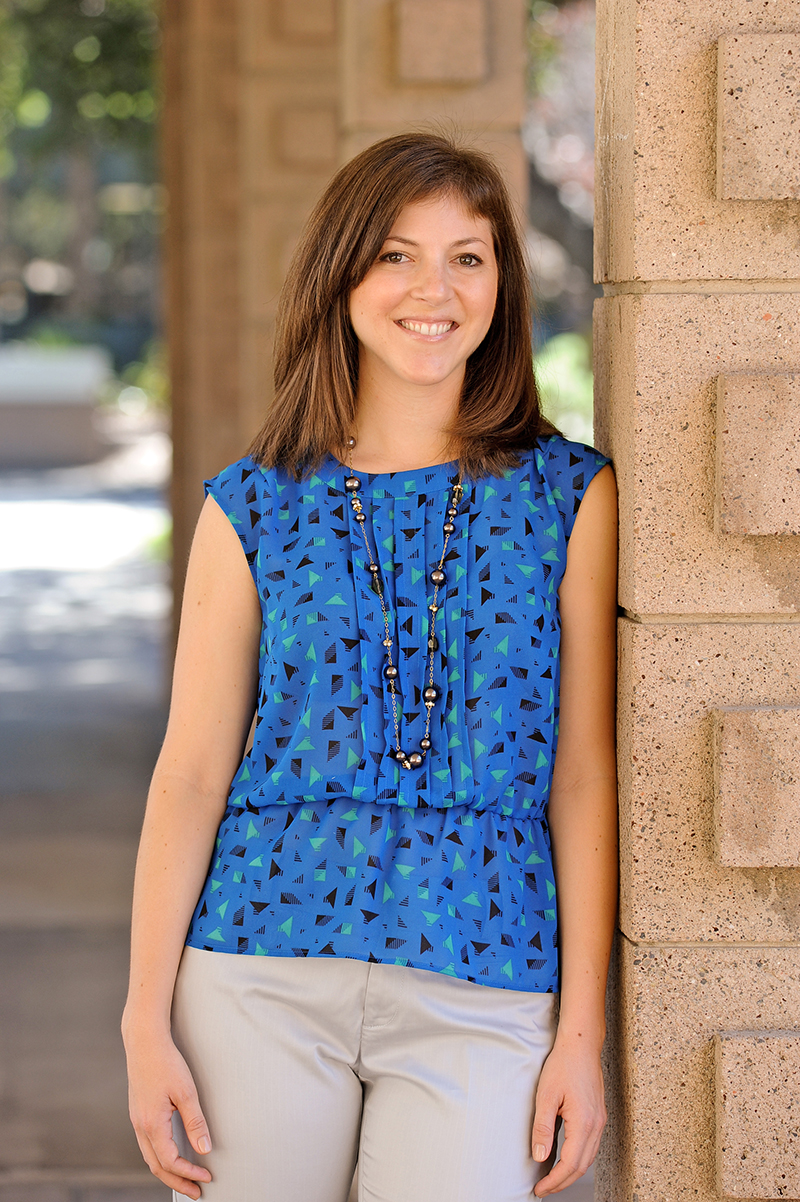Hawkins To Study Air Pollution With CAREER Grant
November 13, 2015
A Harvey Mudd College professor of chemistry is studying the nature of particulate air pollution to better understand how air pollution particles interact with light—a key problem in addressing climate change.
In support of this research, Barbara Stokes Dewey Assistant Professor Lelia Hawkins has received a prestigious Faculty Early Career Development (CAREER) grant from the National Science Foundation. Her project aims to characterize the formation and transformation of atmospheric brown carbon in the Los Angeles basin. The grant establishes Hawkins as a national leader in undergraduate atmospheric chemistry research, a field that few undergraduates get to experience.
Using a sampling system to collect the atmospheric aerosol particles better known as smog, the Hawkins Lab measures the UV/visible absorption spectrum of these samples to examine their color. To streamline this work, the award includes funding for an aerosol mass spectrometer, a valuable instrument that has skyrocketed in popularity among atmospheric chemists due to its ability to measure the chemical composition of particles locally and rapidly. The acquisition of the spectrometer gives Harvey Mudd undergraduates the opportunity to operate state-of-the-art instrumentation commonly limited to graduate work and beyond.
“The chemical nature of secondary compounds is still very poorly understood,” says Hawkins, who studied chemistry and environmental systems at UC San Diego and conducted PhD work characterizing organic components of particulate matter at UCSD’s Scripps Institute of Oceanography. “Figuring out which compounds are responsible for the brown color of some particles has proven even tougher, since they represent an incredibly small, but important, fraction of material. This work will help us target those minor components by using frequent measurements of both composition and absorption extending over weeks to months.”
Often a byproduct of biomass burning, brown carbon compounds are light-absorbing organic aerosol components that, like soot, contribute to atmospheric heating by absorbing solar radiation. Unlike soot, however, brown carbon can form secondarily in the atmosphere in gas and condensed-phase (aerosol) reactions. Understanding the persistence and nature of these secondary brown carbon formations, as well as the optical and chemical changes that accompany brown carbon aging, will increase understanding of brown carbon’s role in atmospheric warming and help to improve climate models.
Hawkins and her team plan to conduct four periods of measurement of brown carbon in atmospheric aerosol, specifically targeting what are known as nitrated aromatics—compounds which can form quickly in areas with elevated volatile organic compounds and nitrogen oxides, such as Los Angeles. Studies suggest these aromatics are the major source of brown carbon in urban environments, though presently, insufficient measurements exist to support this claim. Proximity to the smog-replete Los Angeles basin will enable Hawkins to facilitate semi-continuous brown carbon measurements with the chemical specificity needed to attribute total absorbance to specific compounds and confirm the claim.
Students in Hawkins’ first-year chemistry lab (Chemistry 24) as well as those in her upper-level instrumental analysis course (Chemistry 112) will take part in the project, and some will get the chance present research at national meetings. The grant also directs funds to the Upward Bound program, which gives Harvey Mudd students the opportunity to actively mentor underrepresented high school students.
Hawkins acknowledges that previous funding from Research Corporation and the Barbara Stokes Dewey Foundation “made preliminary work possible and productive,” noting that NSF would have been reticent to invest in the research without proof of concept.
“This award will let me build the lab I dreamt of when I first applied for this faculty position,” she says. “I couldn’t be happier.”
